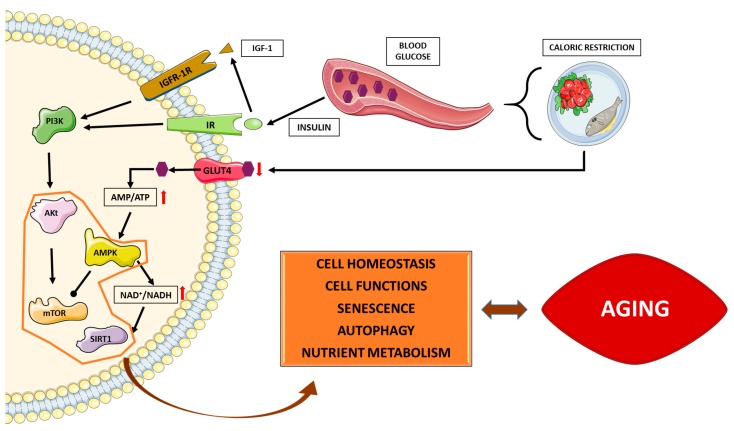Figure 1.
Caloric restriction (CR)-mediated modulation of nutrient sensing pathways. CR results in a decrease in plasma glucose levels that, in turn, decrease IGF-1 and insulin levels. As a result, the signaling downstream insulin receptor (IR) and IGF-1R decreases. In this situation, AKT is in its un-phosphorylated inactive form and, thus, mTOR is also inactive. The decrease in the cellular availability of glucose also increases AMP/ATP ratio and, consequently, AMPK is activated. AMPK also inhibits mTOR complex 1 and increases NAD+/NADH ratio. SIRT1 is a histone deacetylase activated by NAD+. Coordinately, these interconnected nutrient-sensing pathways modulate cell homeostasis, cellular function, senescence, autophagy and metabolism, contributing to healthy aging and longer lifespan. Images from Servier Medical Art have been included in this figure (Available online: http://www.servier.com/Powerpoint-image-bank).

